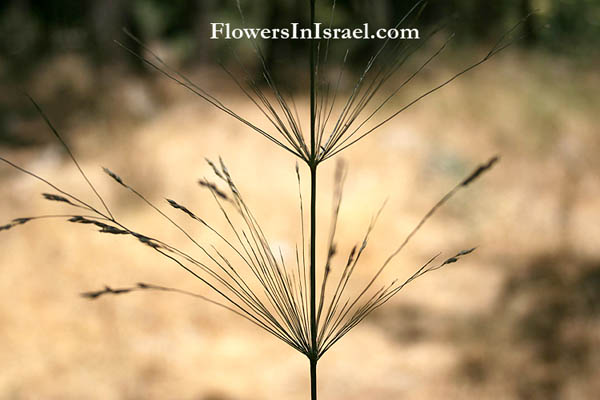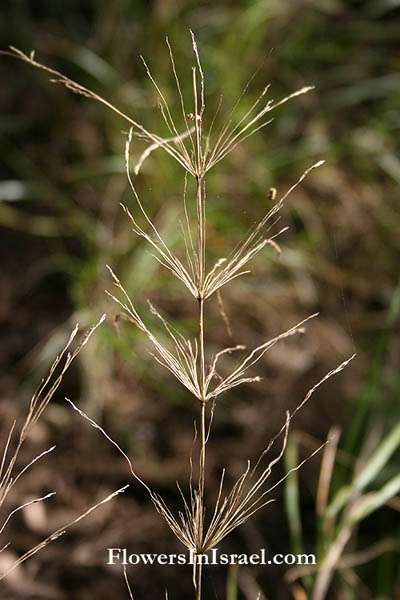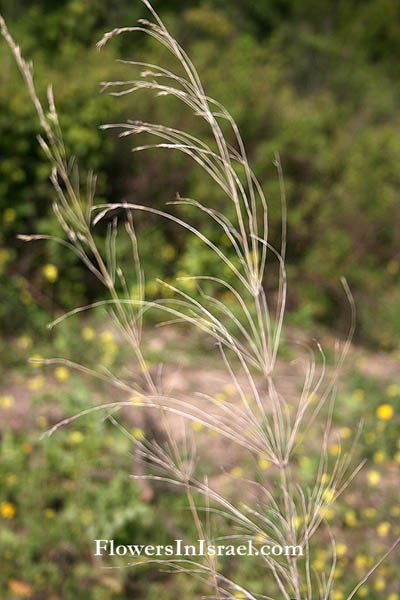Millet grass, נשרן צפוף
| Scientific name: | Piptatherum thomasii (Duby) Kunth | |
| Synonym name: | Piptatherum miliaceum (L.) Coss. var. thomasii (Duby) Freitag | |
| Common name: | Millet grass | |
| Hebrew name: | נשרן צפוף | |
| Family: | Graminea (Poaceae), Grass Family, משפחת הדגניים |

|
| Life form: | Hemicryptophyte | |
| Stems: | Culms often branched | |
| Leaves: | Alternate, rosette, entire | |
| Inflorescence: | Panicle; spikelets with 1 bisexual lemma, rhachilla (=a branch of inflorescence) articulated above the glumes | |
| Flowers: | Green | |
| Fruits / pods: | Caryopses | |
| Flowering Period: | February, March, April, May, June, July | |
| Habitat: | Batha, Phrygana | |
| Distribution: | Mediterranean Woodlands and Shrublands, Semi-steppe shrublands | |
| Chorotype: | Mediterranean | |
| Summer shedding: | Perennating |

Derivation of the botanical name: Piptatherum, pipto, "to fall", and ather, "stalk". thomasii, after Major George Henry Thomas (1816 - 1870), stationed at Fort Yuma about 1850, and later as a general a Civil War hero called the Rock of Chickamauga. miliaceum, pertaining to millet; millet-like. The Hebrew name: נשרן, nasran, formed from נשר, nashar (=to fall out).

|